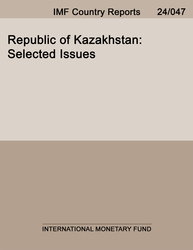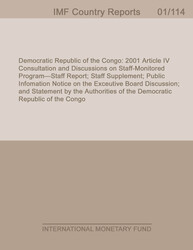
Republic of Kazakhstan: Selected Issues
Selected Issues
READ MORE...
Volume/Issue:
Volume 2024
Issue 047
Publication date: February 2024
ISBN: 9798400267642
$20.00
Add to Cart by clicking price of the language and format you'd like to purchase
Available Languages and Formats
| English |
Prices in red indicate formats that are not yet available but are forthcoming.
Topics covered in this book
This title contains information about the following subjects.
Click on a subject if you would like to see other titles with the same subjects.
Exports and Imports , Inflation , Economics- Macroeconomics , Money and Monetary Policy , International - Economics , Industries - Energy , I , data definition , inflation expectation , inflation in Kazakhstan , I , simulation result , drivers of inflation , Inflation , Oil exports , Oil production , Consumption , Real exports , Global
Also of interest
Summary
This Selected Issues paper applies a range of quantitative methods to explain recent inflation dynamics in Kazakhstan. It presents an overview of recent developments and utilizes a principal component analysis to decompose inflation in Kazakhstan between global, regional, and domestic sources. In addition, it estimates a Phillips curve model, augmented with external variables, to quantify the drivers of inflation. The paper also estimates a vector autoregressive model to look more closely at dynamic effects. The results show that external factors have had a strong impact on inflation dynamics in Kazakhstan in the recent period, but domestic factors remained important. Looking ahead, inflation in Kazakhstan will depend significantly on the global environment but will also be shaped by domestic policy decisions. In the near term, premature monetary policy loosening should be avoided. In the medium term, efforts to strengthen the monetary policy framework should continue to help moderate the volatility of inflation and reach the inflation target. Fiscal policy should remain supportive of price stability.
Copyright © 2010 - 2025
Powered by:
AIDC



